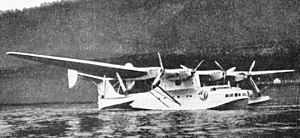
The Hispano-Suiza 12Y was an aircraft engine produced by Hispano-Suiza for the French Air Force before the Second World War. The 12Y became the primary French 1,000 hp (750 kW) class engine and was used in a number of famous aircraft, including the Morane-Saulnier M.S.406 and Dewoitine D.520.

The Bloch MB.210 and MB.211 were the successors of the French Bloch MB.200 bomber developed by Société des Avions Marcel Bloch in the 1930s and differed primarily in being low wing monoplanes rather than high wing monoplanes.
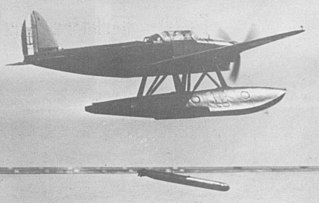
The Latécoère 298 was a French seaplane that served during World War II. It was designed primarily as a torpedo bomber, but served also as a dive bomber against land and naval targets, and as a maritime reconnaissance aircraft. Of a sturdy and reliable construction and possessing good manoeuvrability, it was France's most successful military seaplane, and served throughout the war in various guises.

The Bréguet 521 Bizerte was a long-range military reconnaissance flying boat built by the French aviation company Breguet.

The Sud-Est LeO H-246 was a large four-engined flying boat from the late 1930s.

The CAMS 55 was a reconnaissance flying boat built in France in the late 1920s which equipped the French Navy throughout the 1930s.
The Latécoère 611 was a French four-engined maritime reconnaissance flying boat of the Second World War. Although only a single prototype was completed, this served throughout the war, being used by both the Vichy French and Free French navies.
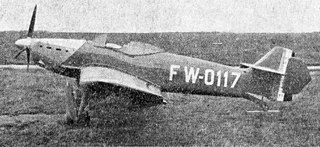
The Loire-Nieuport LN.40 aircraft were a family of French naval dive-bombers for the Aeronavale in the late 1930s, which saw service during World War II.
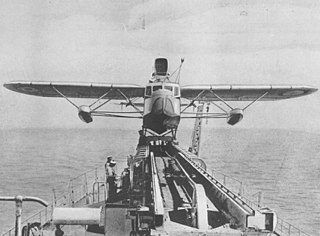
The Loire 130 was a French flying boat that saw service during World War II. It was designed and built by Loire Aviation of St Nazaire.

The Potez 452 was a French flying boat designed and built by Potez in response to a French Navy specification for a shipboard reconnaissance machine for use on its battleships and cruisers.

The Bréguet 730 was a French flying boat of the 1930s. Built to meet the requirements of the French Navy, it was ordered into production but no aircraft were delivered before France surrendered to Germany in June 1940. Four remaining incomplete airframes were completed after the end of World War II, serving with the French Navy until 1954.

The Loire 210 was a French single-seat catapult-launched fighter seaplane designed and built by Loire Aviation for the French Navy.

The Latécoère 300 series of aircraft were a group of civil and military flying boats. They were manufactured by French aircraft manufacturer Latécoère in the 1930s. A single Latécoère 300 was built; it was flown for the first time in 1931 and sank the same year. It was rebuilt and flown again in 1932, being named Croix du Sud.
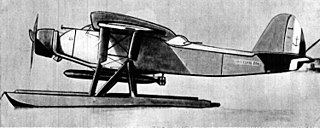
The Latécoère 290 was a torpedo bomber floatplane produced in France during the 1930s. Designed by Latécoère in response to an Aéronavale specification for such an aircraft, the 290 was based on its successful Laté 28.3 mail plane. It was a conventional high-wing, strut-braced monoplane that carried a single torpedo externally under the fuselage.
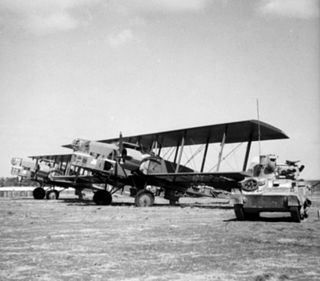
The Lioré et Olivier LeO 25 was a bomber aircraft produced in France in the late 1920s.
The Bréguet 790 Nautilus was a prototype French three-seat coastal patrol flying-boat designed and built by Bréguet Aviation to meet a requirement from the French navy.
The Bréguet 482 was a French four-engined heavy bomber aircraft designed just prior to the outbreak of the Second World War with two prototypes nearing completion when Germany invaded France in 1940, one of which was flown after the end of the war as an experimental platform.
The Hispano-Suiza 12N was one of two new V-12 engine designs first run in 1928 and was manufactured by Hispano-Suiza's French subsidiary for the Armée de l’Air. It produced about 485 kW (650 hp), was the first to use gas nitride hardening and introduced wet cylinder liners into Hispano-Suiza's aircraft engine range. It powered the first non-stop flight from Europe to the United States.

The Potez-CAMS 161 was a large, French six-engined flying boat airliner, designed to operate on the North Atlantic routes that were opening up in the late 1930s. Its development was almost halted by World War II. Just one was built and partially tested before its destruction by Allied forces near the war's end.
The Dewoitine HD.780 was a prototype French fighter-floatplane designed and built from 1938–40. It was a single-seat, single-engined aircraft based on the Dewoitine D.520 land-based fighter. A single example was built but was abandoned unflown, and was scrapped.
